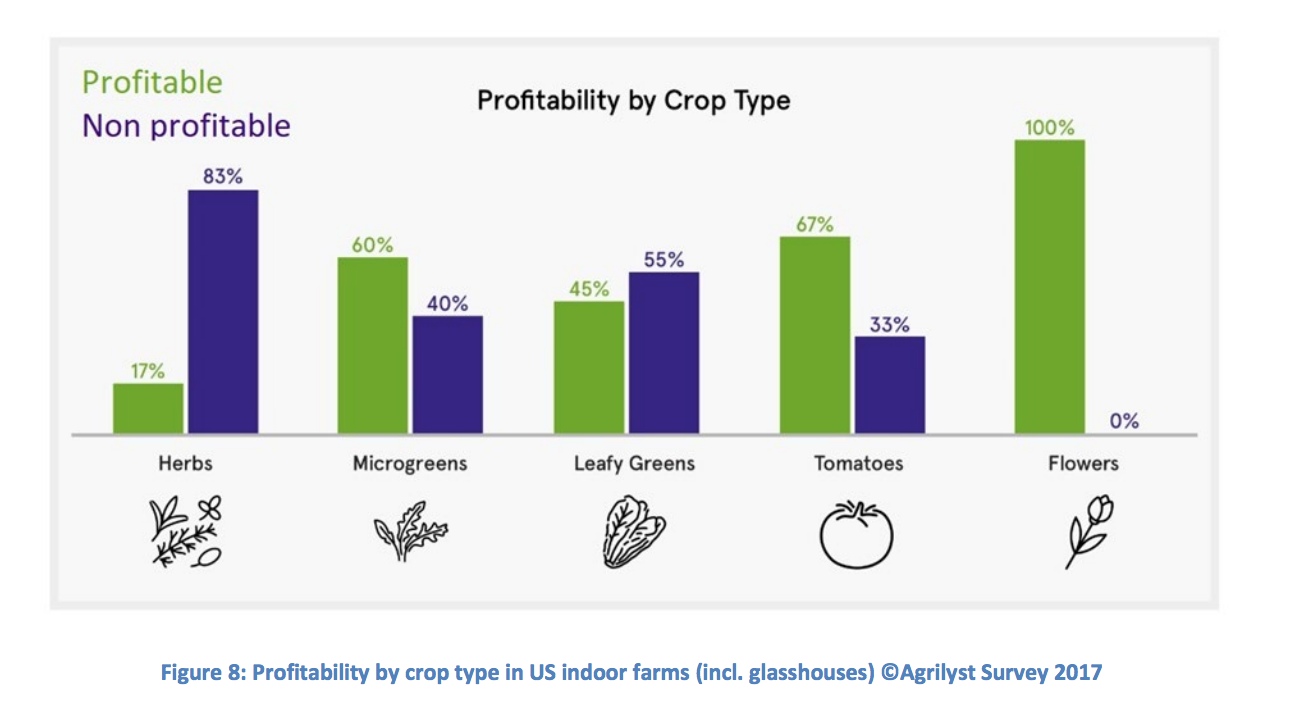Agricultural scandals like the 2019 e-coli infections of Romaine lettuce have led many to question what they eat, where it comes from, and how it’s farmed. This combined with the prediction that by 2050 Earth will be inhibited by 9 billion humans has got a lot of people thinking. One idea is the concept of vertical farming which increases output and decreases yield volatility because of its predictable nature. Vertical farming really hit the spotlight in 2017 when Softbank raised $200 million for a company called Plenty. This has led many people to ask questions like is something so capital-intensive actually worth it? In 2018 Sarah Hughes wrote about it about in piece titled, “Vertical Farming, Does the Economic Model Work?”. The general conclusion is that and while such a technique yields positive outcomes like saving a ton of water, to be economically viable agricultural automation needs to develop while energy costs need to drop.
The automation of agriculture related jobs is set to take-off because so as the cost per employee keeps rising, so will the demand for alternatives. As the price per employee goes up, automation becomes more and more attractive and as that happens, more firms will enter the market and bring down price. Barriers to entry are also weakening because of increasingly favorable government policy. One example is the National Institute of Food and Agriculture announcing in January of 2018 support for, and pledging a $7 million towards collaborative robotics in January 2018. According to the Bureau of Labor Statistics, compensation costs rose 2.9% in 2018 alone and innovation is not lagging. According to William Studebaker, president and CIO of Robo Global, “The pace of change is only accelerating, and it’s accelerating very dramatically right now”…“The players are still in the locker room getting their clothes on.” The future of agriculture with respect to innovation looks bright, but as with everything there is a tradeoff
A rapid pace of innovation means more demand for energy. The current state of even just electrical transmission and distribution in the United States is not efficient nor sustainable. According to the U.S. Energy Information Administration, 5% of power is lost during the transmission and distribution process, and according to Schneider Electric 8-15% of electricity is lost. This massive of amount of power and electrical loss is just one portion of the efficiency issue, which of course will lead to consequences like increased C02 emissions and therefore an increased amount of attributed issues such as respiratory illnesses. There are however a lot of companies focused on reducing negative externalities associated with the energy sector. Breakthrough Energies, led by Bill Gates is one notable venture fund that raised $170 billion with the aim of solving issues related to natural resource sustainability.
Overall, I have no doubt that the innovative criteria for vertical gardening to succeed will be met. Agricultural automation is already well on its way while the brightest people in the world are working towards energy related negative externalities. In the meantime it’s worth keeping an eye on key costs and crops, which Sarah Hughes put together neatly:

For further research: Deep farming (vertical farming in abandoned mines), what types of farming (hydroponic, aeroponic, etc..) work best for what plants, mixed-use skyscrapers and the sharing economy
What to watch: World Agro-Tech Innovation Summit (March 19-20, 2019)
Sources
How big are Power line losses? – Schneider Electric Blog. (2019). Retrieved from https://blog.schneider-electric.com/energy-management-energy-efficiency/2013/03/25/how-big-are-power-line-losses/
Hughes, Sarah. Vertical Farming: Does The Economic Model Work?. (2018). Retrieved from nuffieldinternational.org/live/Report/UK/2017/sarah-hughes
Larkin, Michael. Labor Terminators: Farming Robots Are About To Take Over Our Farms. (2018). Retrieved from https://www.investors.com/news/farming-robot-agriculture-technology/
Wirfs-Brock, J., Wirfs-Brock, J., & Jordan, M. (2019). Lost In Transmission: How Much Electricity Disappears Between A Power Plant And Your Plug?. Retrieved from http://insideenergy.org/2015/11/06/lost-in-transmission-how-much-electricity-disappears-between-a-power-plant-and-your-plug/
